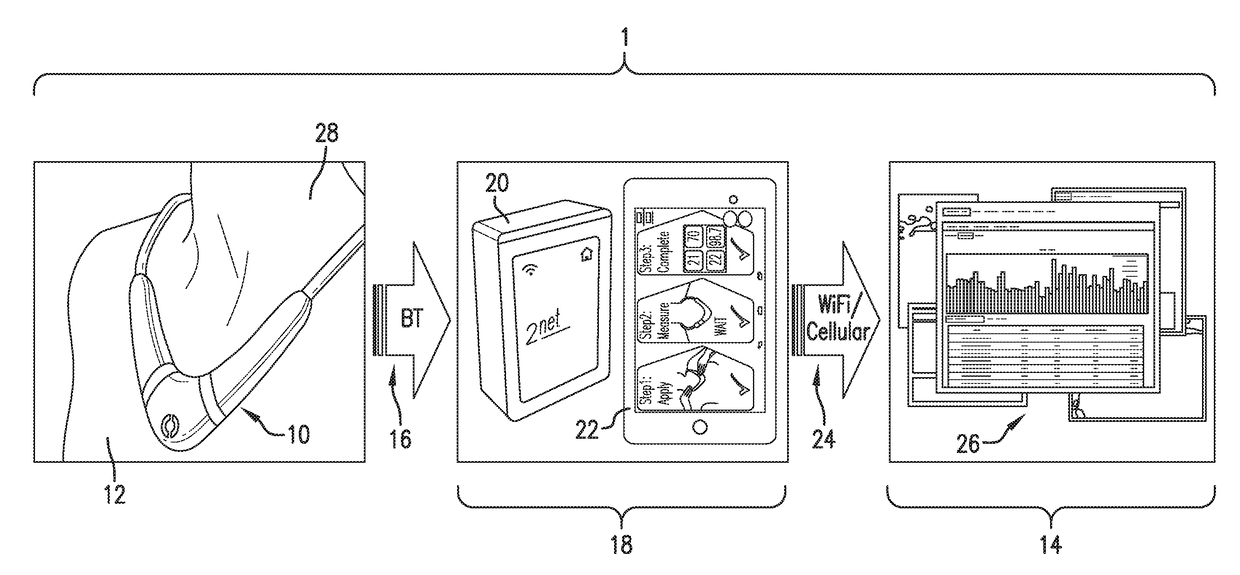Neck-worn physiological monitor
a physiological monitor and neck-worn technology, applied in the field of sensors, can solve the problems of nullifying the value, affecting treatment, measuring errors, etc., and achieve the effects of improving the repeatability and reproducibility of the measurement, improving patient compliance, and facilitating monitoring a patien
- Summary
- Abstract
- Description
- Claims
- Application Information
AI Technical Summary
Benefits of technology
Problems solved by technology
Method used
Image
Examples
Embodiment Construction
1. Remote Patient-Monitoring System
[0066]As illustrated in FIG. 2, a sensor 10 according to the invention is one component of an overall system 1 designed to facilitate remote monitoring of—and, if required, therapeutic intervention on behalf of—a patient 12. As will be explained in greater detail below, the sensor 10 measures numerical and waveform data, and then sends this wirelessly to a gateway system 18, and from there to a web-based system 26 that can be viewed at a remote facility 14 such as a hospital, medical clinic, nursing facility, and / or eldercare facility. There, clinicians can evaluate or further process the data to evaluate the patient 12.
[0067]In particular, after measuring and processing the patient's physiological parameters as addressed below, the sensor 10 automatically transmits data through an internal Bluetooth® wireless transmitter (identified schematically at 16) to a gateway system 18, which suitably may be either a 2net™ system 20 available from Qualcomm,...
PUM
 Login to View More
Login to View More Abstract
Description
Claims
Application Information
 Login to View More
Login to View More - R&D
- Intellectual Property
- Life Sciences
- Materials
- Tech Scout
- Unparalleled Data Quality
- Higher Quality Content
- 60% Fewer Hallucinations
Browse by: Latest US Patents, China's latest patents, Technical Efficacy Thesaurus, Application Domain, Technology Topic, Popular Technical Reports.
© 2025 PatSnap. All rights reserved.Legal|Privacy policy|Modern Slavery Act Transparency Statement|Sitemap|About US| Contact US: help@patsnap.com



